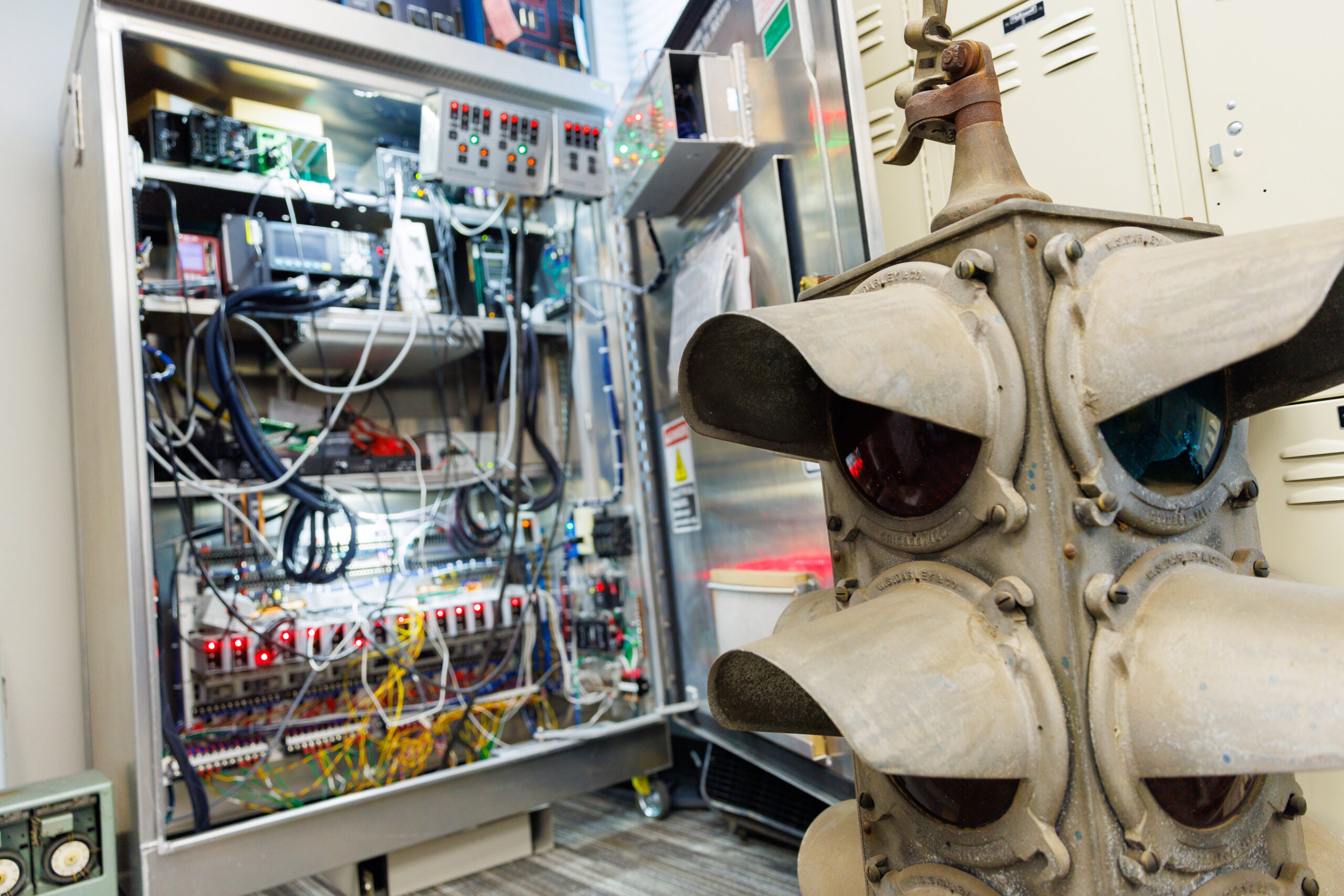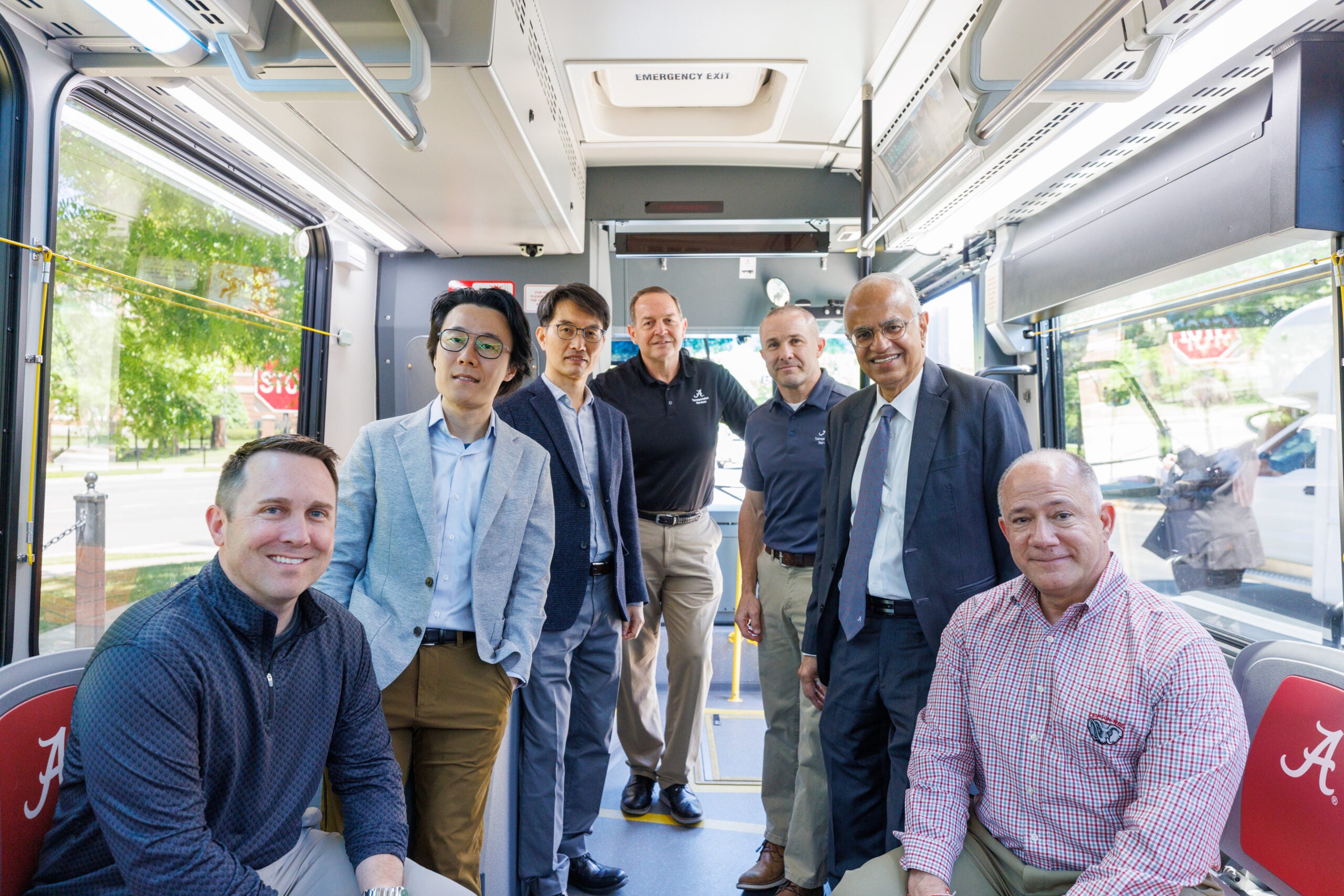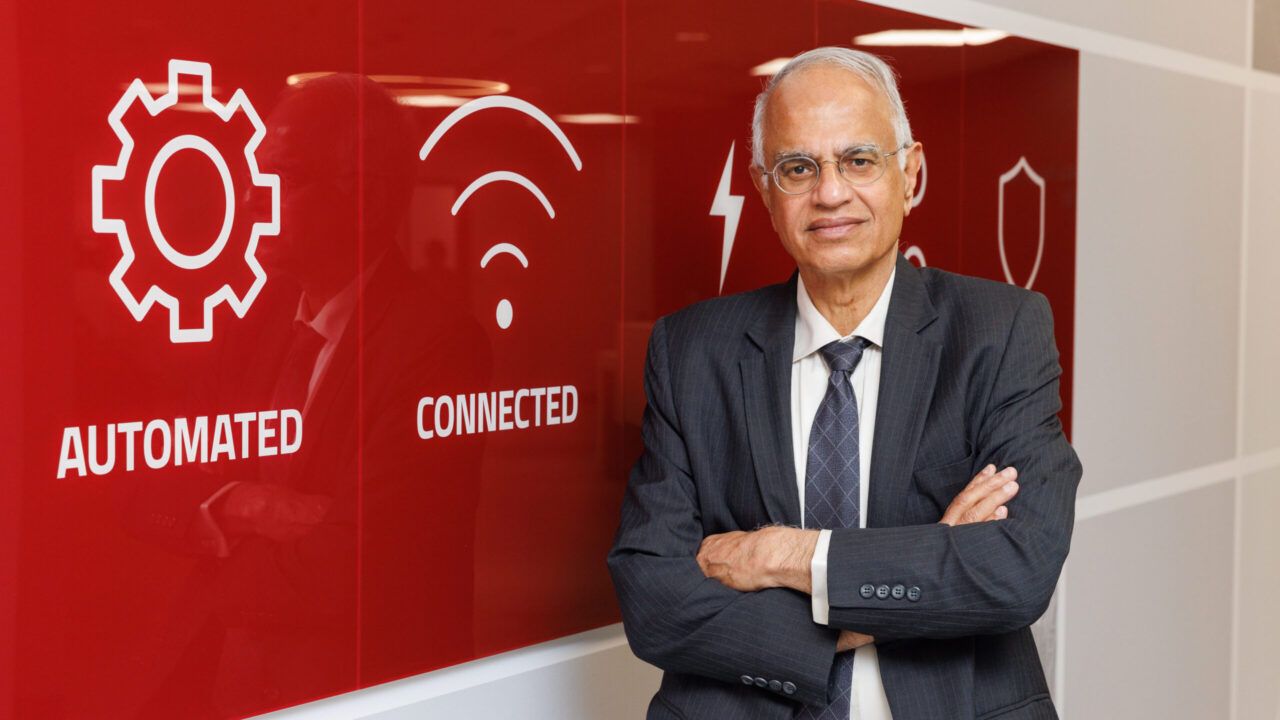With a grant from the Federal Transit Administration and the United States Department of Transportation, The University of Alabama is gearing up for a $3 million project to develop advanced driver assistance systems for large transit buses.
Led by Dr. Bharat Balasubramanian, executive director for the Center for Advanced Vehicle Technologies and chief mobility research and development officer for the Alabama Transportation Institute, the project will bring automated safety features available only in personal vehicles to mass transit, beginning with Crimson Ride. Perrone Robotics, Inc., a leader in commercial automated and autonomous vehicle technology, is a key partner on the project.
The project will begin with intensive virtual simulations with an interface to Perrone Robotics’ MAX software platform — a drop-in kit that can be tested in the lab and then fitted into a Crimson Ride bus.

“We are thrilled to bring our TONY Kit to this groundbreaking project,” said Paul Perrone, founder and CEO of Perrone Robotics. “This collaboration with the University of Alabama allows us to push the boundaries of what automated systems can achieve in next generation transit applications, ensuring safer and more reliable transportation for all.”
The project will develop, validate and then test driver assistance technologies for a pedestrian-heavy environment. Once the software performs well in the lab, the team will test the buses in controlled conditions on a road with mock pedestrians before adding them to campus routes.
Safety First
“If you’re talking about accident-free driving, you’re talking about fully automated driving,” Balasubramanian said, who has more than four decades of experience in automotive research and development.
Many high-end vehicles have technology similar to the automated functions that will be adapted to the Crimson Ride buses. These safety features are not available for large transit in part because of economics — companies sell far more cars, even luxury cars, than buses. With a smaller customer base, there is less drive toward innovation and the robotic components are not readily available.
The challenge in adapting ADAS technology for large transit lies in the size and function of these vehicles. A city bus will slow, stop and even swerve to the side in entirely different ways, requiring new software and testing. Additionally, a bus might stop 200 times a day and precision docking must work perfectly, within a centimeter of accuracy, all 200 times.
The Future is Connected
This project will develop and test four key functions in Crimson Ride buses: smooth acceleration and deceleration for fuel economy; pedestrian detection and emergency braking to avoid or mitigate pedestrian collisions; precision docking; and assisted driving in narrow roads.
Connectivity is a key, and often overlooked, component of automated driving that will help achieve the project’s goals. Vehicles with ADAS technology must be in communication with the city itself. Connected infrastructure along roads and at intersections lets the bus know specific and up-to-date conditions such as traffic-signal timings, flooding, accidents or pedestrians on the road. This not only provides a safer and better experience for passengers but improves fuel efficiency with smooth acceleration and deceleration.
When autonomous vehicles communicate with infrastructure and other vehicles, the massive costs in time, money and human lives from traffic jams and highway accidents could be a thing of the past.

The Pit Crew
The researchers involved with the ADAS bus project span multiple University of Alabama departments.
- Dr. Xinwu Qian, assistant professor in civil, construction, and environmental engineering
- Dr. Joshua Bittle, associate professor of mechanical engineering, and associate director of the Center for Advanced Vehicle Technologies
- Dr. Alex Hainen, associate professor in the department of civil, construction and environmental engineering and director of the Center for Transportation Operations, Planning and Safety
- Dr. Nathan Jeong, assistant professor in the department of computer and electrical engineering
- Dr. Brandon Dixon, associate professor in computer science
Faculty will be working closely with Chris Esposito, executive director of parking and transportation operations, and James Knickrehm, the director of operations of the Crimson Ride bus system. Nichole Cavin, executive director at the office of sponsored research, was a key team member in setting up the complex grant and contracts.
“We have a unique partnership here, with researchers working hand in hand with the transit division. Among other advantages, this allows us to safely deploy the autonomous vehicle technology we jointly develop into real-world use,” Balasubramanian said.

The University of Alabama, part of The University of Alabama System, is the state’s flagship university. UA shapes a better world through its teaching, research and service. With a global reputation for excellence, UA provides an inclusive, forward-thinking environment and nearly 200 degree programs on a beautiful, student-centered campus. A leader in cutting-edge research, UA advances discovery, creative inquiry and knowledge through more than 30 research centers. As the state’s largest higher education institution, UA drives economic growth in Alabama and beyond.
